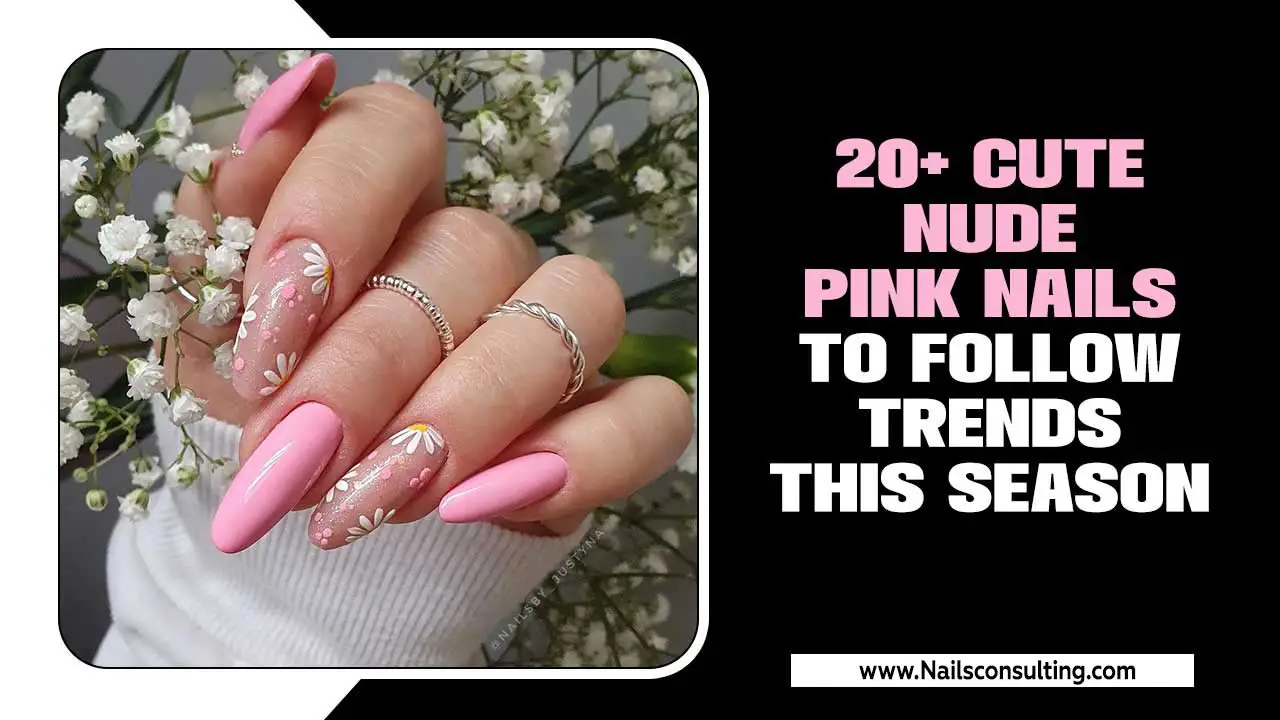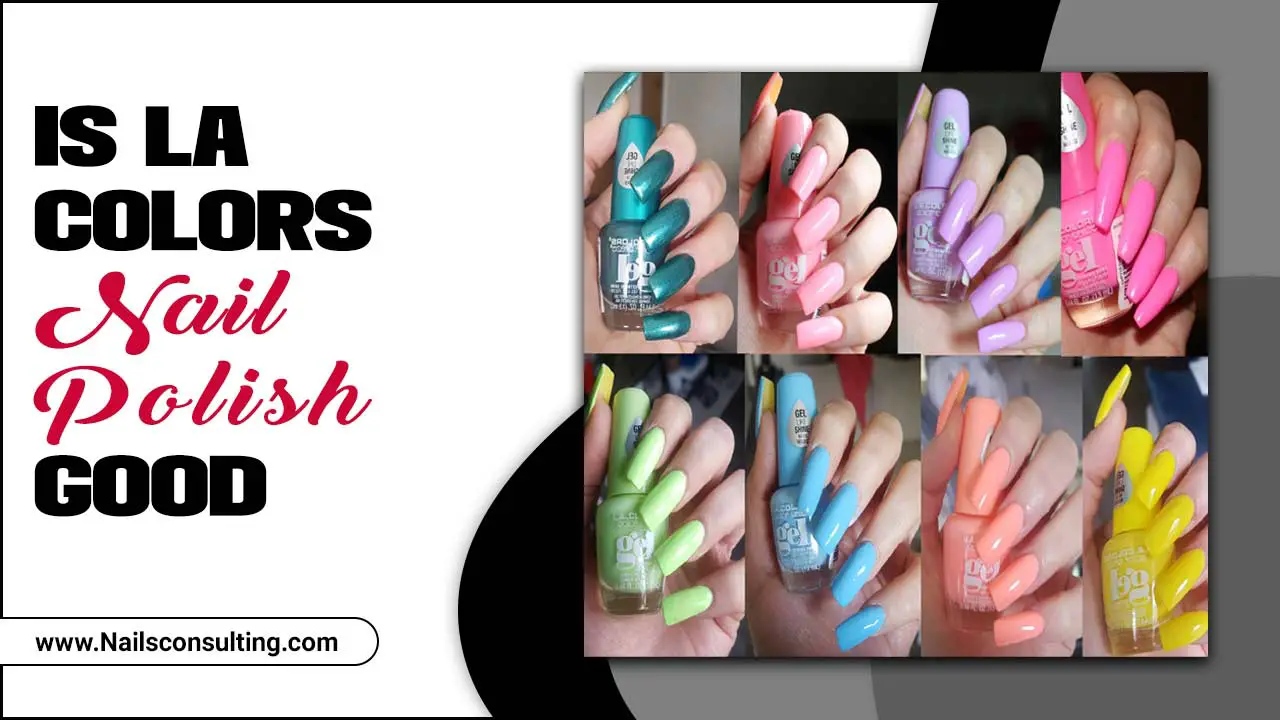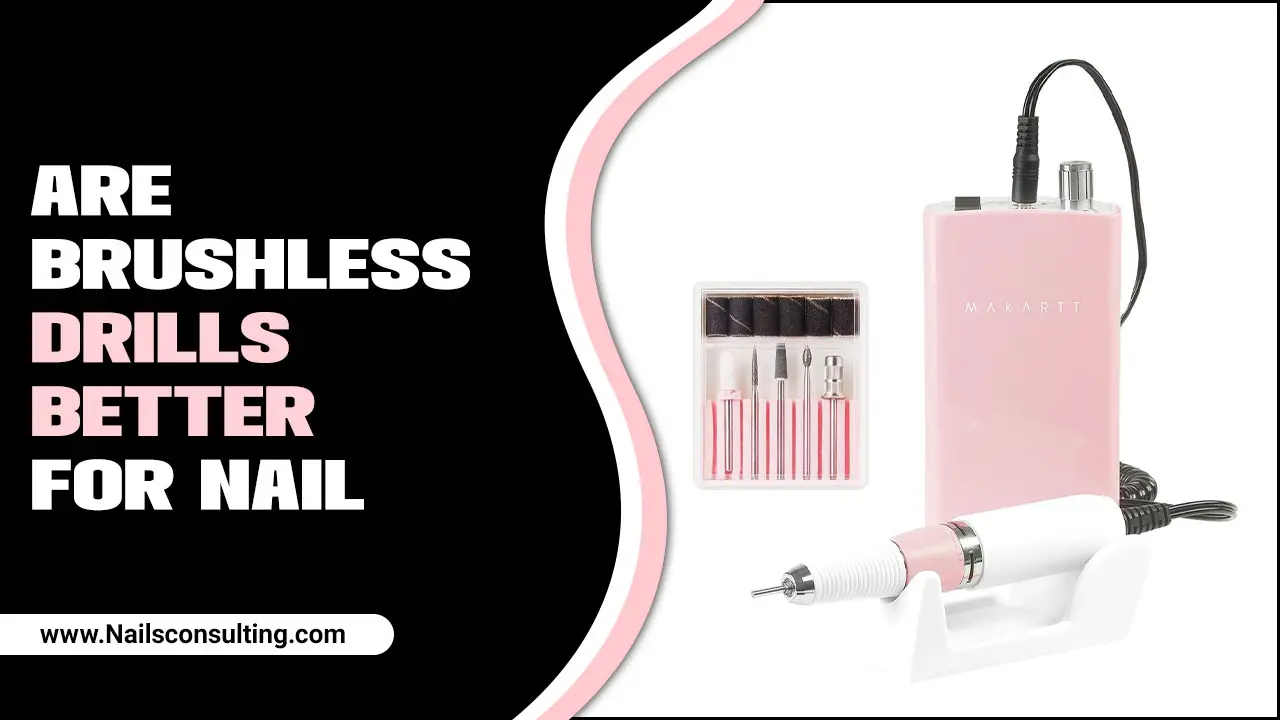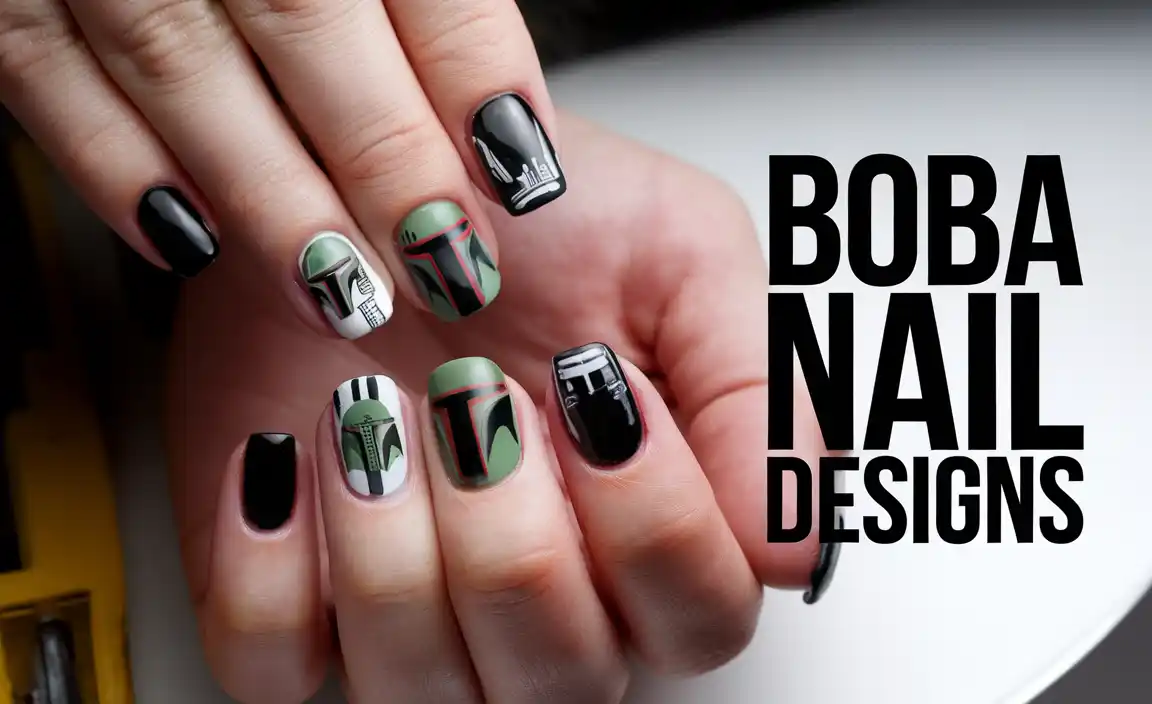Create gorgeous, soft French tip nails with pastel colors using simple techniques perfect for beginners. This guide breaks down how to achieve those dreamy pastel tips effortlessly, making your nails pop with delicate charm.
Hello, nail lovers! Are you looking for a manicure that’s both chic and incredibly easy to do at home? French tip nails are a timeless classic, but sometimes the traditional white can feel a little… stark. That’s where pastel magic comes in! Imagine soft hues like baby pink, mint green, or lavender gracing the tips of your nails. It’s the perfect way to add a touch of sweetness and sophistication to your look. If French tips have seemed a bit intimidating, or you’re just ready to swap white for a softer shade, you’re in the right place. We’re going to demystify the process and show you just how simple and fun creating stunning pastel French tips can be. Get ready to elevate your at-home manicures!
<h2>Why Pastel French Tips are Your New Go-To Manicure</h2>
Pastel colors bring a unique charm to the classic French tip design. They’re softer and more understated than traditional white tips, making them incredibly versatile. Whether you’re heading to the office, a casual brunch, or a special event, pastel French tips add a touch of polished elegance without being too loud. They’re also fantastic for spring and summer, evoking images of blooming flowers and sunny days. Plus, for beginners, pastel shades can be more forgiving than stark white, making the application process feel less pressured.
<h3>The Appeal of Pastel Perfection</h3>
Soft & Dreamy Aesthetic: Pastels instantly create a gentle, ethereal look that’s hard to resist.
Versatile Styling: They complement a wide range of outfits and personal styles, from minimalist to more playful.
Seasonal Delight: Perfect for welcoming warmer months or adding a hint of spring to your look any time of year.
Beginner-Friendly: Lighter colors often hide minor imperfections better than bold or dark shades.
<h2>Essential Tools for Your Pastel French Tip Journey</h3>
Before we dive into the step-by-step process, let’s gather what you’ll need. Having the right tools can make all the difference in achieving a clean, professional-looking manicure at home. Don’t worry, most of these are common nail care items you might already have!
<h3>Your Pastel French Tip Toolkit</h3>
<strong>Base Coat:</strong> This protects your natural nails and helps your polish last longer. Look for a good quality, chip-resistant formula.
<strong>Pastel Nail Polish Colors:</strong> Choose 1-3 soft shades like baby pink, lilac, mint green, baby blue, or buttery yellow.
<strong>Top Coat:</strong> Seals your design and adds a beautiful glossy finish, helping to prevent chips. A quick-dry top coat is a lifesaver!
<strong>Fine-Tipped Nail Art Brush (Optional but Recommended):</strong> For precise tip application, especially if you have a steadier hand or want to try more intricate designs.
<strong>French Manicure Stencils or Nail Guides (Optional):</strong> These adhesive stickers help create a clean line for your tips. A revelation for beginners!
<strong>Nail Polish Remover:</strong> For cleaning up any mistakes.
<strong>Cotton Pads or Balls:</strong> To apply the remover.
<strong>Nail File:</strong> To shape your nails.
<strong>Buffer Block:</strong> To smooth the nail surface.
<strong>Cuticle Oil:</strong> For nourishing your cuticles after the manicure.
<h3>Choosing The Right Pastel Shades</h3>
When selecting your pastel polishes, consider your skin tone and personal preference.
Fair Skin: Soft pinks, lavenders, and light blues often look stunning.
Medium Skin: Peachy tones, mint greens, and coral pastels can be very flattering.
Dark Skin: Vibrant yet soft shades like fuchsia pastels, bright mints, and electric lilacs can really pop.
<h2>The Step-by-Step Guide to Effortless Pastel French Tips</h2>
Creating beautiful pastel French tips at home is totally achievable! We’ll walk through a few different methods, from using stencils to freehanding, so you can find what works best for you.
<h3>Method 1: Using French Manicure Stencils (Beginner’s Best Friend!)</h3>
This method is fantastic for achieving perfectly uniform tips, even if your hand isn’t the steadiest.
<h4>Step 1: Prep Your Nails</h4>
<ol>
<li>Start by removing any old polish. <a href=”https://www.nailpro.com/nailcare/article/20969530/how-to-properly-remove-nail-polish” target=”_blank”>Learn more about proper nail polish removal</a>.</li>
<li>Gently file your nails into your desired shape. Round or square with rounded edges work beautifully for French tips.</li>
<li>Use a buffer block to smooth out any ridges and lightly buff the surface for better polish adhesion.</li>
<li>Push back your cuticles gently with an orange stick or pusher.</li>
<li>Wipe nails with nail polish remover to remove any oils and dust.</li>
</ol>
<h4>Step 2: Apply Base Coat</h4>
<p>Apply one thin coat of your base coat and let it dry completely. This protects your nails and creates a smooth canvas.</p>
<h4>Step 3: Apply Your Base Color</h4>
<p>Apply one or two thin coats of a neutral or sheer pink nail polish. This will be the base color under your pastel tips. Let it dry thoroughly.</p>
<h4>Step 4: Position the Stencils</h4>
<p>Once your base color is dry, carefully apply the French manicure stencil to each nail. Make sure the curved edge of the stencil sits just where you want the tip of your nail to begin. Press down firmly to ensure there are no gaps where polish can seep through.</p>
<h4>Step 5: Apply the Pastel Tip</h4>
<p>Dip your brush into your chosen pastel nail polish. Start by applying a thin layer onto the tip of your nail, over the stencil. You might need two thin coats for full opacity. Work carefully to avoid flooding the stencil. Let this layer dry for a minute or two – it needs to be tacky but not wet.</p>
<h4>Step 6: Remove the Stencils</h4>
<p>Gently and slowly peel off the stencil while the polish is still slightly wet. Peeling when it’s too dry can cause the polish to chip or lift. If you notice any smudges or unevenness, you can try to clean it up gently with a nail art brush dipped in polish remover.</p>
<h4>Step 7: Apply Top Coat</h4>
<p>Once your pastel tips are completely dry, apply a generous coat of your favorite top coat. This seals everything in, adds shine, and helps prevent chips. A quick-dry top coat is a great way to speed up the process.</p>
<h4>Step 8: Clean Up and Nourish</h4>
<p>Use a nail art brush dipped in nail polish remover to clean up any stray polish around your cuticles or fingertips. Finish by applying cuticle oil to hydrate your nails and cuticles.</p>
<h3>Method 2: Freehanding with a Fine Brush (For the Adventurous!)</h3>
If you’re feeling a bit more confident, or don’t have stencils, you can absolutely freehand your pastel French tips. Support is key here!
<h4>Steps 1-3: Prep and Base Coats</h4>
<p>Follow Steps 1-3 from Method 1: Prep your nails, apply base coat, and apply your neutral or sheer base color. Let them dry completely.</p>
<h4>Step 4: Load Your Brush</h4>
<p>Dip your fine-tipped nail art brush into your pastel polish. Wipe off any excess on the edge of the bottle opening or on a lint-free wipe to avoid a thick, clumpy application.</p>
<h4>Step 5: Create the Smile Line</h4>
<p>Start by creating the “smile line” – the curve at the tip of your nail. You can do this by:
<ul>
<li><strong>The V Method:</strong> Paint a ‘V’ shape on the free edge of your nail, pointing towards the center. Then, fill in the space above the ‘V’ to create the tip.</li>
<li><strong>The Sidewalls Method:</strong> Place two dots on the sidewalls of your nail where you want the tip to end, then connect them with a curved line across the tip.</li>
</ul>
Steady your hands by resting your elbows on a table. Take your time and don’t worry if it’s not perfect on the first try!</p>
<h4>Step 6: Fill and Refine</h4>
<p>Carefully paint the pastel color onto the tip of your nail, following your created line. You may need to go back and forth between dots and lines to create a smooth, even curve. Apply a second thin coat if needed for full coverage, letting the first coat become slightly tacky.</p>
<h4>Step 7: Clean Up</h4>
<p>While the polish is still a bit wet, use a small brush dipped in nail polish remover to carefully clean up the lines and remove any stray polish around the cuticle area. This is where a steady hand and a good cleanup brush really shine!</p>
<h4>Step 8: Apply Top Coat and Nourish</h4>
<p>Once everything is dry, apply a quality top coat for shine and durability. Follow up with cuticle oil to keep your nails looking their best.</p>
<h3>Method 3: Using the Polish Brush (The Quickest Way!)</h3>
This is the most straightforward method and perfect for a quick, charming Frenchie.
<h4>Steps 1-3: Prep and Base Coats </h4>
<p>Follow Steps 1-3 from Method 1: Prep your nails, apply base coat, and apply your neutral or sheer base color. Let them dry completely.</p>
<h4>Step 4: Apply Pastel Color with Polish Wand </h4>
<p>This requires a steady hand and a bit of practice! Carefully use the original polish brush to paint the pastel color onto the tips of your nails.
<ul>
<li>Wipe most of the polish off the brush to avoid blobbing.</li>
<li>Gently paint a curve across the tip of each nail.</li>
<li>If your nail polish brush is wide, you can try holding it flat against the nail to create the curve, then angle it to fill in and refine.</li>
<li>Take breaks and steady your hands by resting your wrists or elbows.</li>
</ul>
</p>
<h4>Step 5: Cleanup is Key</h4>
<p>Immediately after painting each nail, use a small cleanup brush dipped in nail polish remover to perfect the line. This is crucial for a clean look with this method!</p>
<h4>Step 6: Top Coat and Cuticle Care</h4>
<p>Once your tips are dry, apply your top coat and finish with cuticle oil for hydrated nails.</p>
<h2>Creative Pastel French Tip Variations to Inspire You</h2>
Once you’ve mastered the basic pastel French tip, why not play around with some fun variations? These ideas can add an extra pop of personality to your nails.
<h3>Double French Tips</h3>
<p>Apply a thin pastel line above a classic white or nude French tip, or layer two different pastel shades for a subtle gradient effect. For example, a pale pink tip with a slightly lighter shimmer pink line just above it.</p>
<h3>Ombre Pastel Tips</h3>
<p>Instead of a solid line, blend a pastel color into the white tip or the base color to create a soft ombre effect. This gives a more diffused, dreamy look.</p>
<h3>Reverse French Tips (Half Moons)</h3>
<p>Focus the pastel color on the lunula (the half-moon at the base of your nail) instead of the tip. You can use stencils or a fine brush for this, painting a curved shape at the cuticle.</p>
<h3>Accent Nail Pastel Tips</h3>
<p>Try a different pastel color on each nail or only do French tips on an accent nail (like your ring finger) while the others have a solid pastel or neutral color.</p>
<h3>Glitter Pastel Tips</h3>
<p>Add a fine glitter polish over your pastel tips, or use glitter polish for the tip itself for a touch of sparkle. This is perfect for a special occasion!</p>
<h3>Textured Pastel Tips</h3>
<p>Experiment with matte top coats over a glossy pastel tip, or use textured polishes for a unique finish. A matte finish can give pastels a sophisticated, velvety look.</p>
<h2>Tips for Maintaining Your Pastel French Tips</h2>
To keep your beautiful pastel French tips looking fresh and fabulous for as long as possible, follow these simple maintenance tips:
<ul>
<li><strong>Reapply Top Coat:</strong> Every 2-3 days, apply an extra layer of top coat to reinforce the polish and add shine.</li>
<li><strong>Avoid Harsh Chemicals:</strong> Wear gloves when doing household chores, especially when dealing with cleaning products, as they can chip or dull your polish.</li>
<li><strong>Moisturize:</strong> Keep your hands and cuticles hydrated with lotion and cuticle oil. Dry hands can make even the prettiest nails look less appealing.</li>
<li><strong>Be Gentle:</strong> Avoid using your nails as tools, such as for scraping or prying.</li>
<li><strong>Touch-Ups:</strong> If you notice a small chip, you can often fix it by gently filing down the rough edge and applying a little bit of top coat or even the pastel color to the tip.</li>
</ul>
<h2>Troubleshooting Common Pastel French Tip Issues</h2>
Even with the best intentions, sometimes things don’t go perfectly. Here are some common issues and how to fix them:
<table>
<thead>
<tr>
<th>Problem</th>
<th>Solution</th>
</tr>
</thead>
<tbody>
<tr>
<td>Uneven or wobbly tip line</td>
<td>Use a cleanup brush dipped in nail polish remover to carefully sculpt and straighten the line. For future attempts, try stencils or a light dusting of baby powder on the wet polish edge before it dries completely and then brush off the excess.</td>
</tr>
<tr>
<td>Polish seeped under the stencil</td>
<td>Ensure the stencil is pressed down very firmly, with no air bubbles. Let the base color dry completely and the pastel tip layer be slightly tacky, not wet, when peeling.</td>
</tr>
<tr>
<td>Tips are too thick or clumpy</td>
<td>Use thinner coats of polish. Wipe excess polish off the brush before applying. Consider using a fine nail art brush for more control and thinner lines.</td>
</tr>
<tr>
<td>Polish chipping or peeling</td>
<td>Ensure you are using a good base coat and top coat. Cap the free edge by swiping your top coat horizontally across the tip of your nail. Avoid submerging nails in water for extended periods.</td>
</tr>
<tr>
<td>Difficult to get opacity with pastel color</td>
<td>Apply two thin coats of pastel polish rather than one thick one. Some pastel shades are naturally more sheer; a white or very light nude base color under the pastel can help boost its vibrancy.</td>
</tr>
</tbody>
</table>
<h2>Frequently Asked Questions About Pastel French Tips</h2>
<h3>What’s the best way for a total beginner to do French tips?</h3>
<p>For beginners, French manicure stickers or stencils are your best friend! They help create a clean, straight line easily. Just apply the sticker, paint over it, and peel it off. It takes the guesswork out of getting a perfect curve.</p>
<h3>Can I use regular nail polish, or do I need special products?</h3>
<p>You can absolutely use regular nail polish! You’ll need a base coat, your chosen pastel polish, and a top coat. A fine nail art brush or French tip guides can help, but they aren’t strictly necessary if you’re patient with the polish brush.</p>
<h3>How do I get a clean smile line with pastel polish?</h3>
<p>A steady hand is key! Rest your wrists or elbows on a surface for support. You can use a cleanup brush dipped in nail polish remover to refine the line after painting, or try using French tip stickers for guided precision.</p>
<h3>What if my pastel polish looks streaky?</h3>
<p>Pastel shades can sometimes be a bit sheer. Ensure your base color is fully dry and apply two thin* coats of the pastel polish instead of one thick one. Make sure to let each coat dry slightly before applying the next.</p>
<h3>How long do pastel French tips usually last?</h3>
<p>With proper application and care, a good quality nail polish manicure can last anywhere from 5 to 10 days. Reapplying top coat every few days helps extend the wear and keep them shiny.</p>
<h3>Are there any nail health benefits to pastel French tips?</h3>
<p>While the colors themselves don’t offer health benefits, using a good base coat protects your natural nails from staining. Keeping your nails and cuticles moisturized with oil also contributes to overall nail health, making any polish look better.</p>
<h2>Conclusion: Embrace Your Inner Pastel Artist!</h2>
And there you have it! Creating beautiful, soft pastel French tip nail designs is entirely within your reach, no matter your skill level. We’ve explored simple techniques, essential tools, and fun ways to adapt the classic French tip using the enchanting power of pastels. Whether you opted for the ease of stencils, the precision of a fine brush, or the direct approach with your polish wand, you’ve got the power to transform your nails into works of art that are both elegant and playful. Remember, nail art is all about expressing yourself and having fun. Don’t be afraid to experiment with different pastel combinations, try out a variation, or even embrace a slightly imperfect line – that’s part of the handmade charm! So go ahead, pick your favorite soft shade, and let your nails bloom with that essential pastel magic. You’ve got this!




